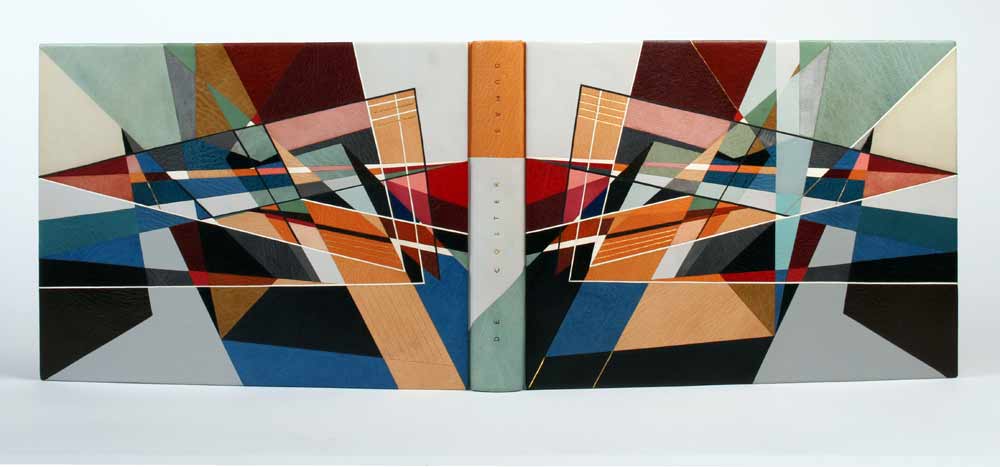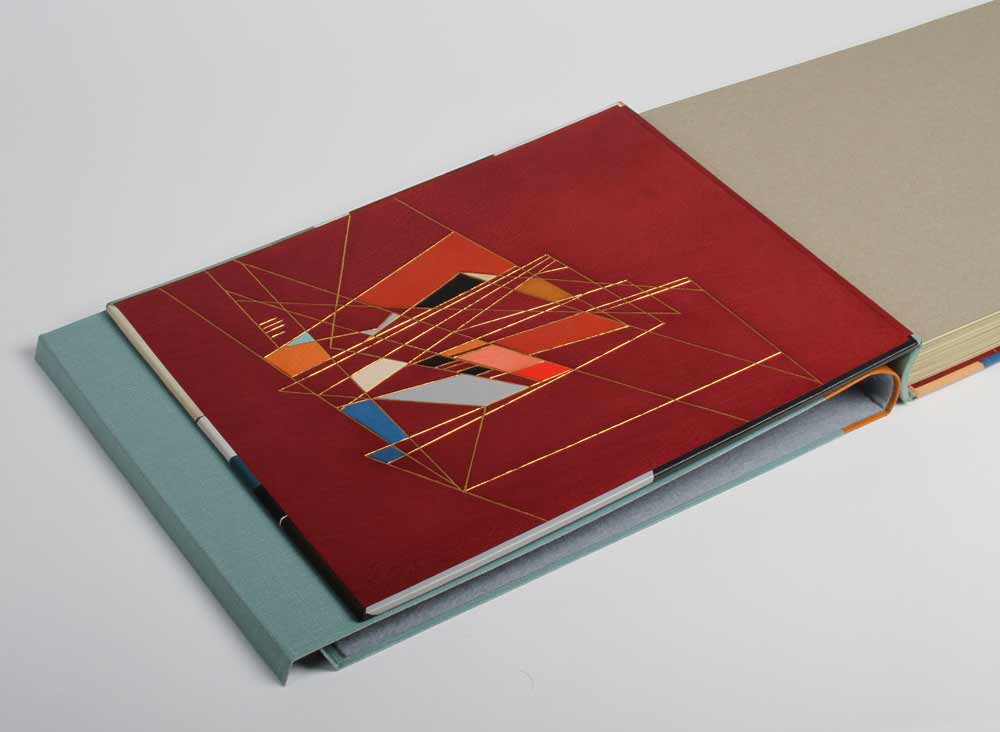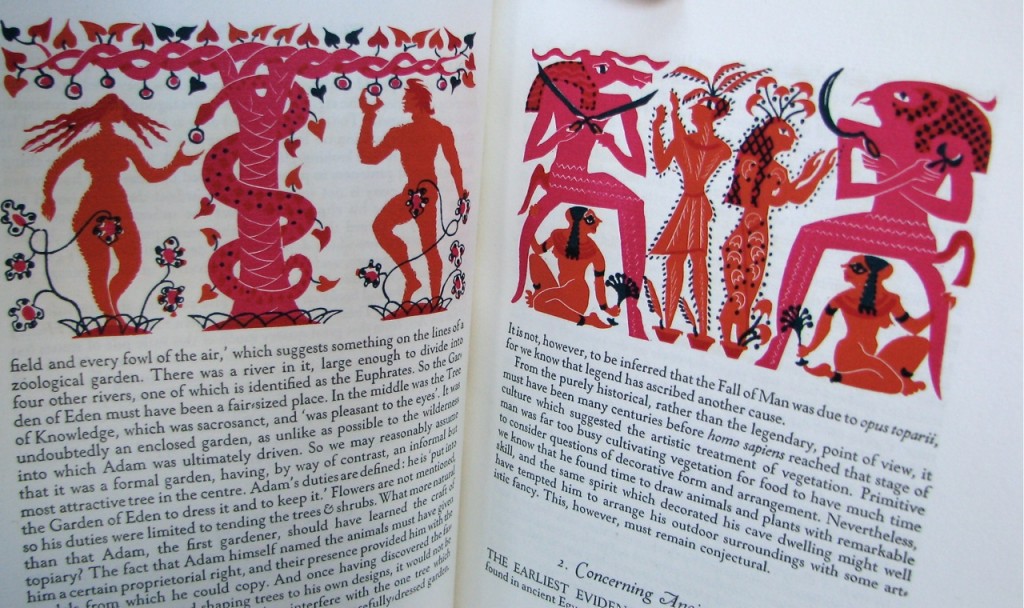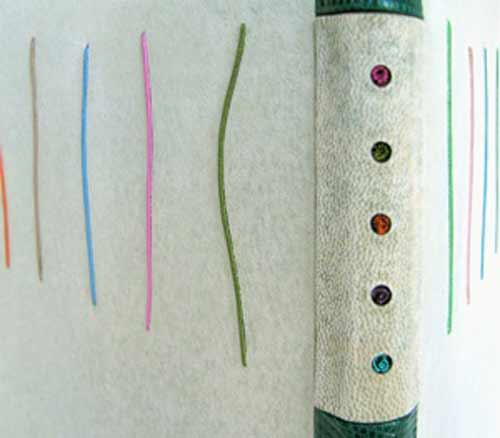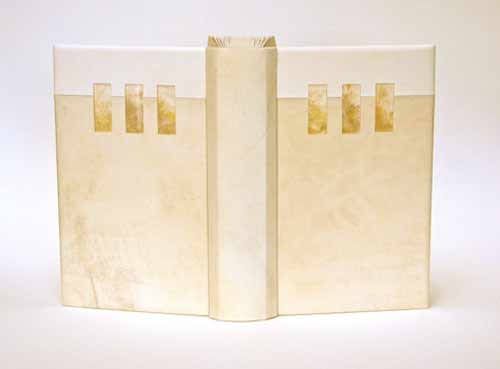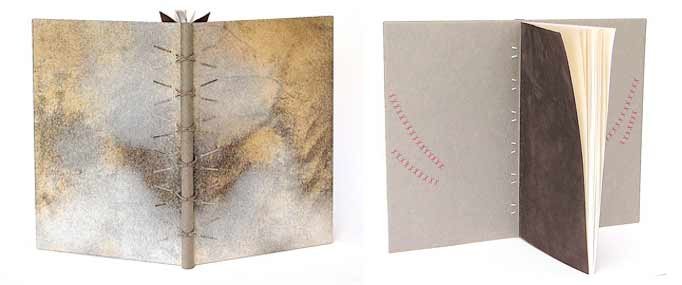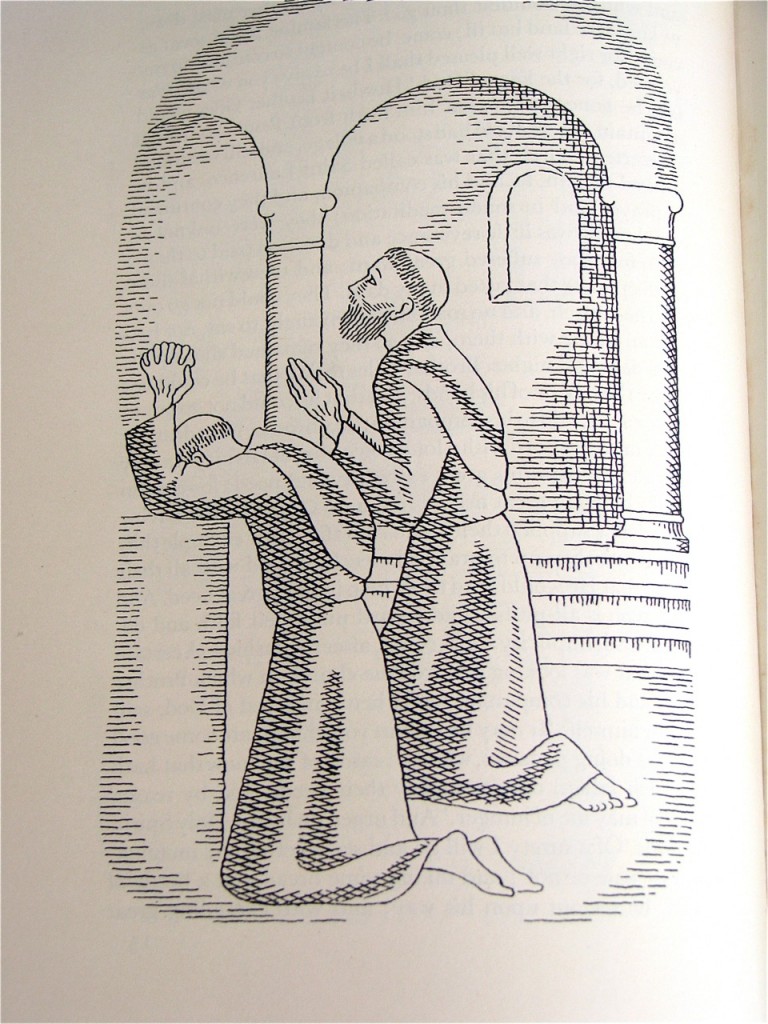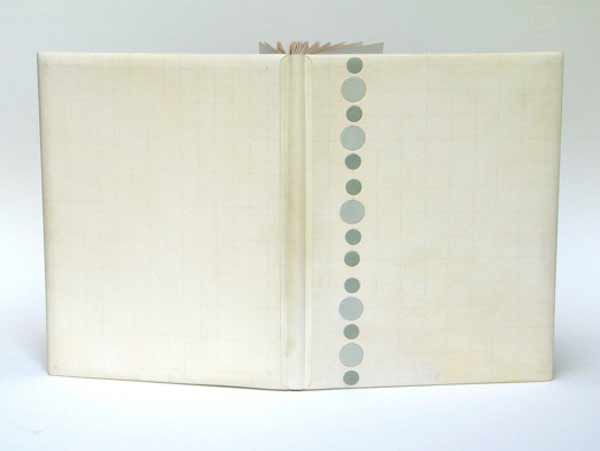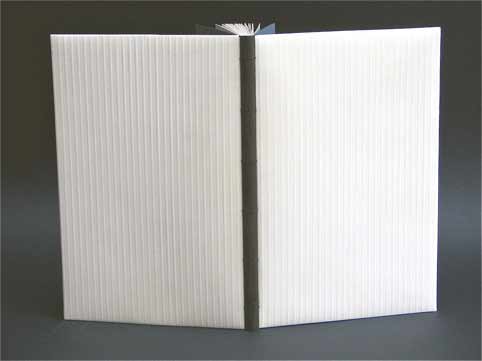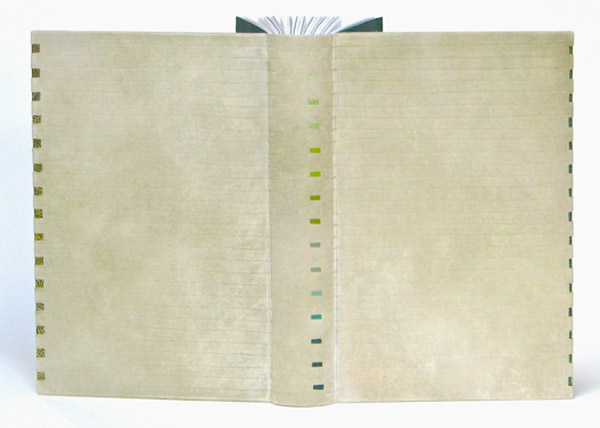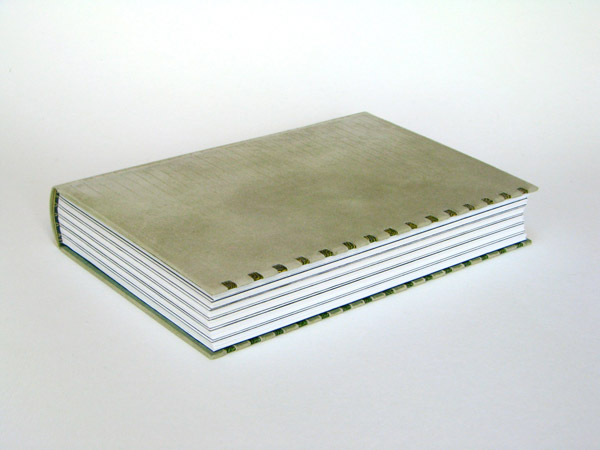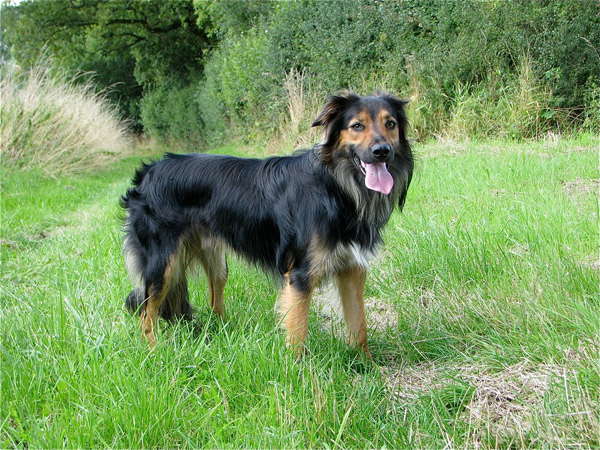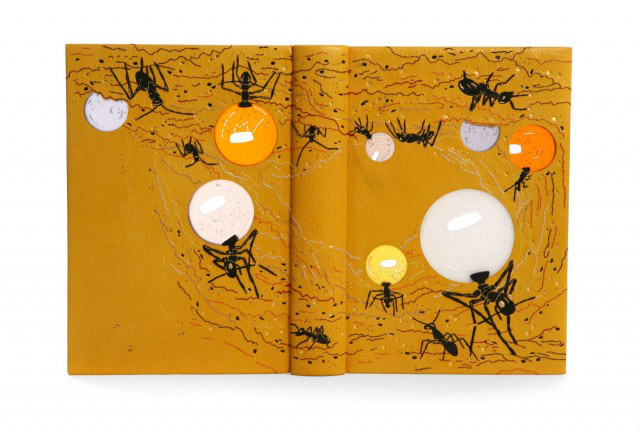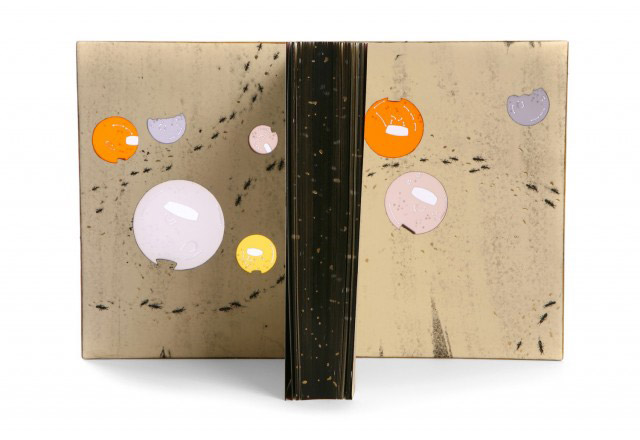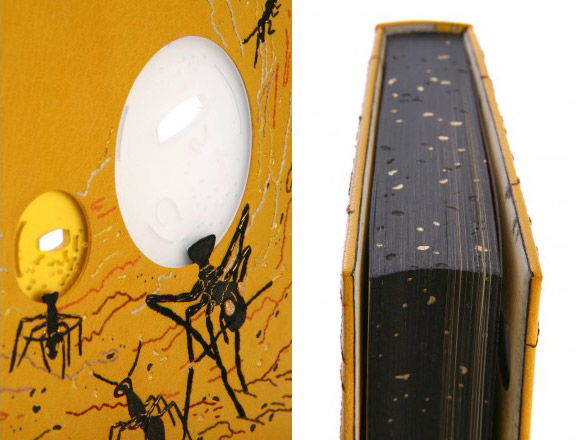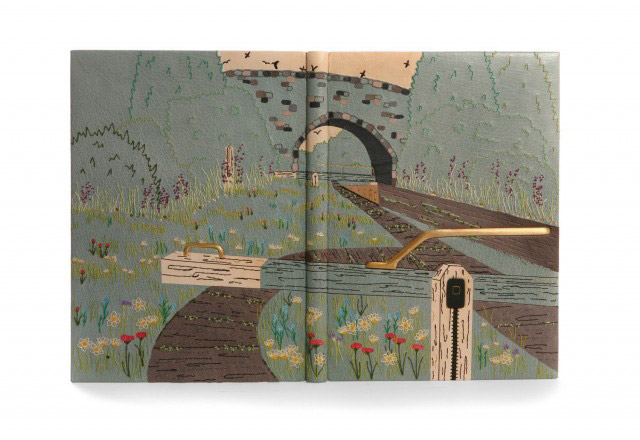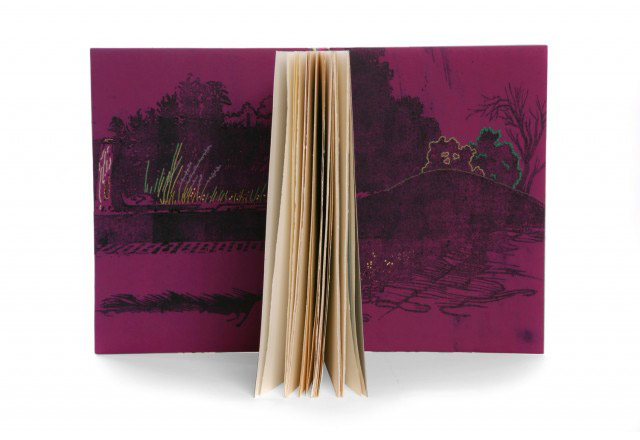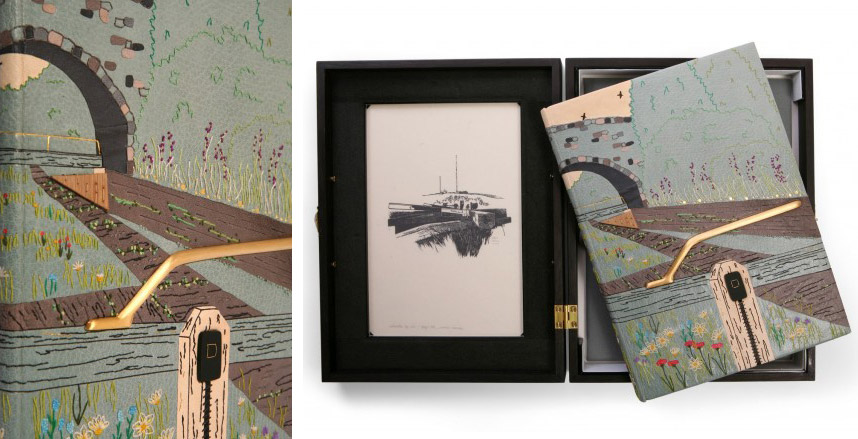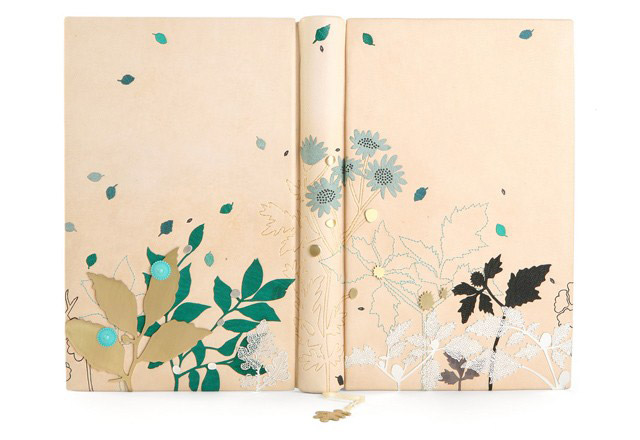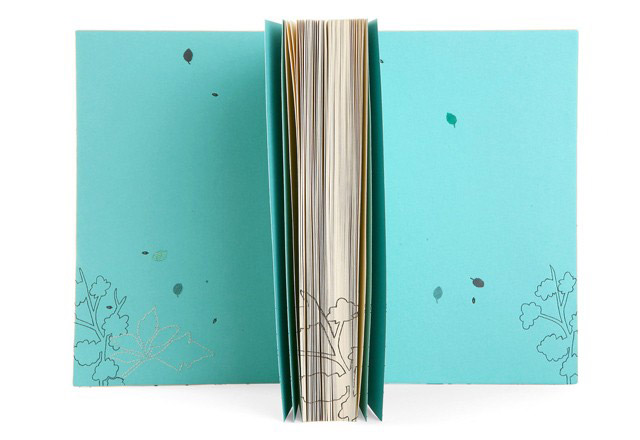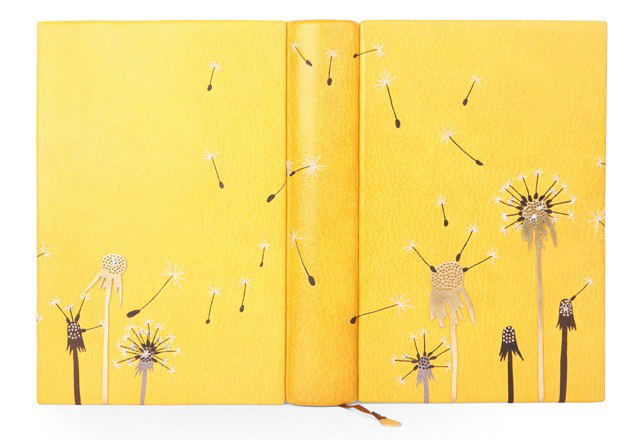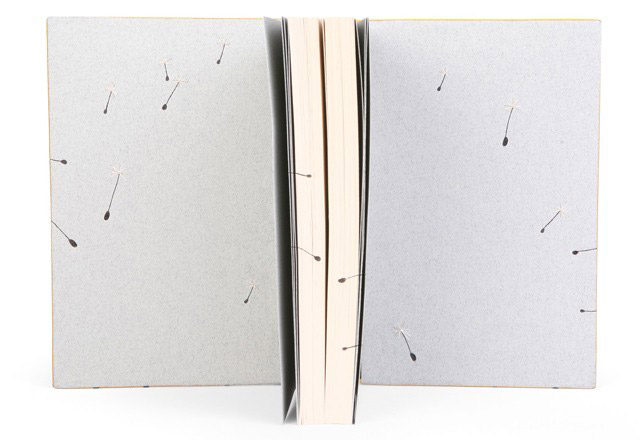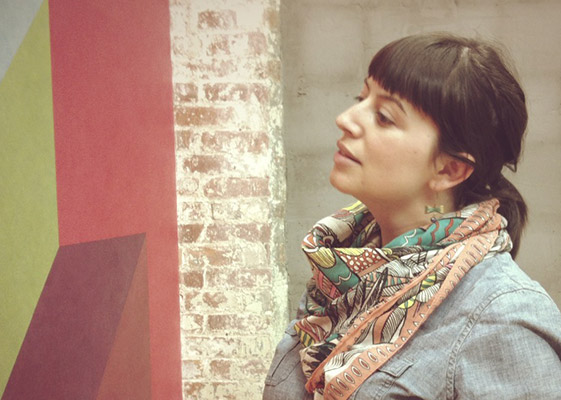Dumas/de Coster is a beautiful collection of photographs of bookbindings from 1935-1980. It was published in a limited edition of 100 in Paris for the Librarie Auguste Blaizot in 1981. The catalogue is printed on tinted Romana paper, with 14 color and 19 black and white photographs, signed by both artists.
Commissioned by a collector, Derek Hood bound this book as a laced-in boards binding sewn on pleister tapes. (I’m not familiar with this term, but Derek describes them as the French type that you can then fray and lace into the boards after sewing.) The individual pages were guarded before sewing. The spine was covered in three separate parts and the boards were attached using the leather over boards technique (also referred to as a Bradel binding), once completed. The top edge is hand gilt in 24kt leaf and the headbands sewn with silk thread.
The endpapers are leather jointed with leather doublures, which are decorated with onlays and gold tooling in a similar manner as the cover design. The book is housed in a quarter leather chemise and a leather entry slipcase.
I always look forward to the moment when my inbox receives material for the next interview. As I opened the folder containing images of Derek Hood’s more recent bindings I was struck by the image of this binding. I’m greatly inspired by Derek’s work and was so pleased he agreed to be interviewed on my blog.
The design of this binding is incredibly complex. The linear and triangular forms along with the range of colors offers intrigue and depth. Derek shares his inspiration and process behind the design.
The design was abstracted from a pencil landscape drawing by Germaine de Coster. Initially, the whole image was traced in simplistic linear form, outlining the buildings, mountains and sunrays, so that every pencil stroke was essentially accounted for. Areas of interest were then honed and focused on until the main triangular form was realized. The finished piece has only an essence of the original drawing, but it is intended to convey the same idea of sunlight and shadow bouncing off multiple planes whilst crossing a vast landscape.
In 2006, Derek was elected a Licentiate member of the Designer Bookbinders and assigned Paul Delrue and Lori Sauer as mentors. Derek never formally visited either of them during his licentiateship, but discussed the topics of art and books regularly on the telephone. “I like them and their work a lot. It was nice to have two strong, but totally different perspectives on life within the realms of Designer Bookbinders.” Derek now holds the position of a Fellow in the Designer Bookbinders.
Read the interview after the jump and come back each Sunday in the month of April for more of Derek’s work.
